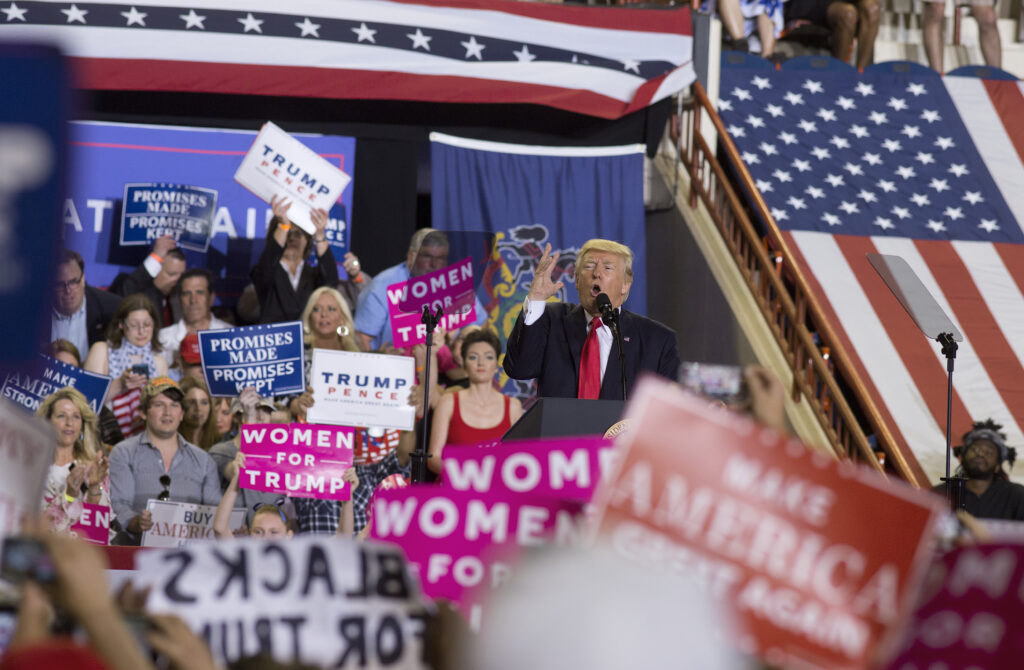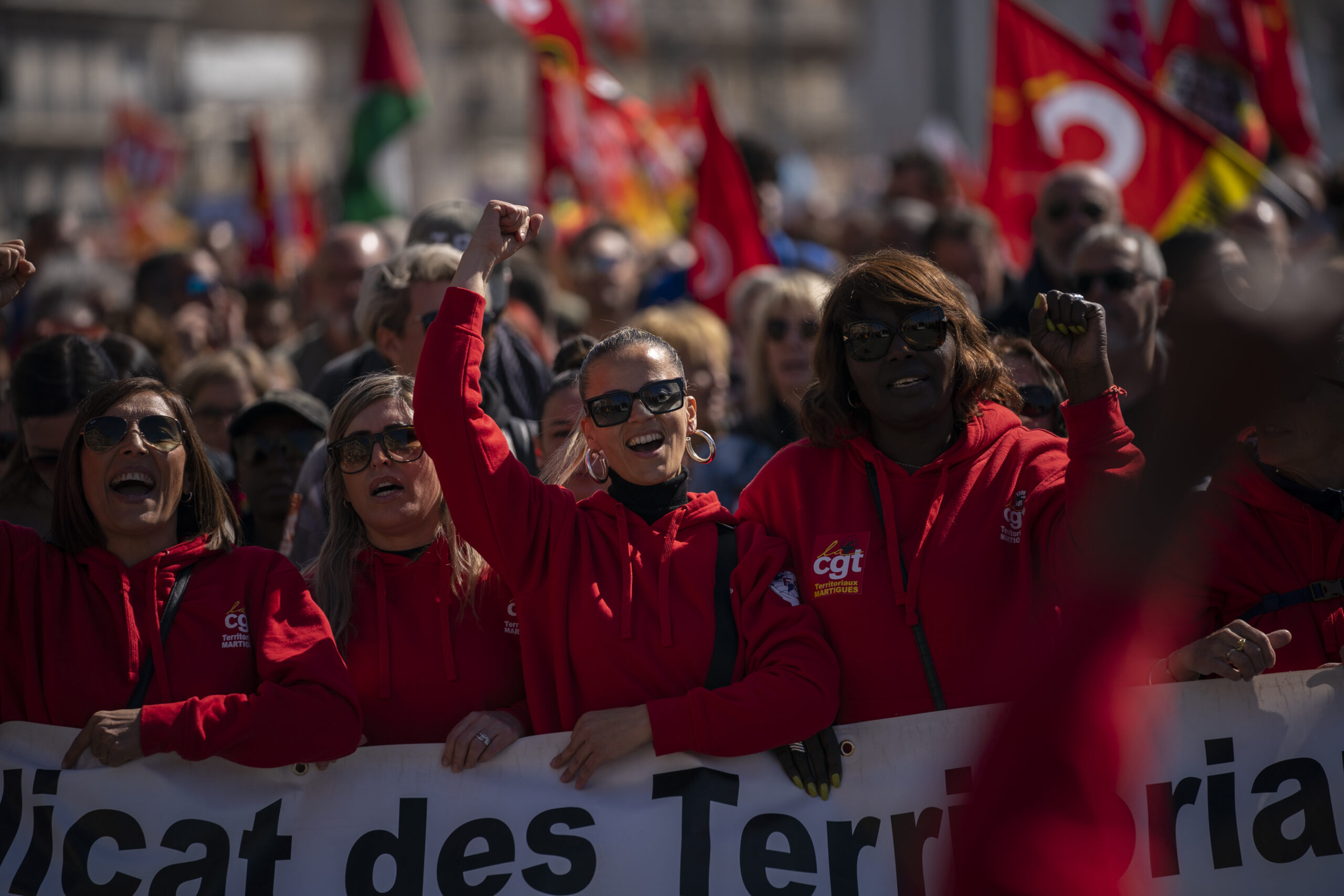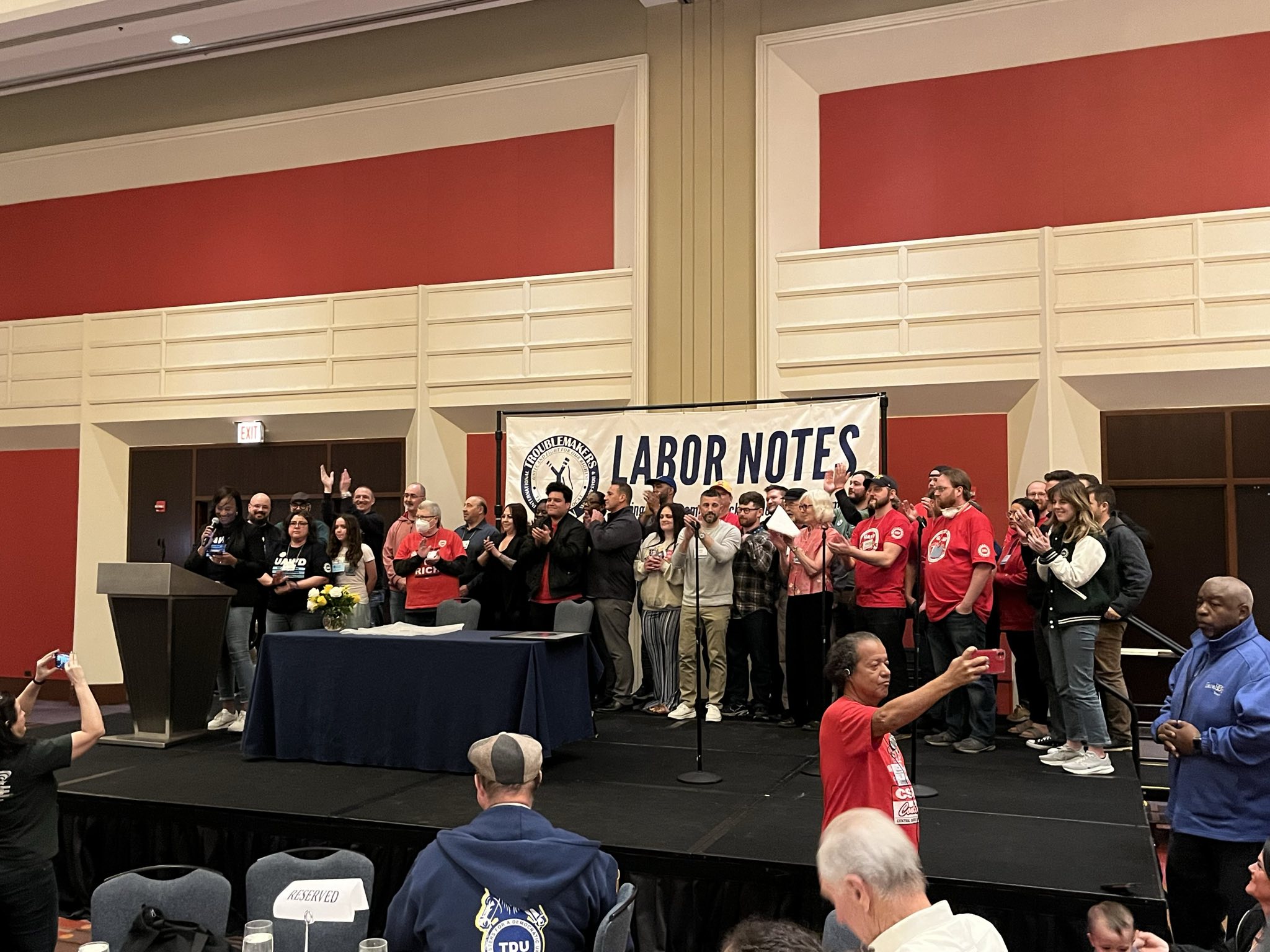Having now had 100 days in which to judge the Trump presidency, let me be as blunt as possible: There is not a single redeemable feature in the man or his administration. Any claim that suggests otherwise is based on delusion. Any argument that this represents a continuation of even “normal” Republican politics is belied by what we have thus far seen.
In the first 100 days of the Trump presidency, the entire political arrangement in the US has been upended. What was considered far right, conservative, moderate, politically liberal, and far left now demand reinterpretation. The country is in a panic over the failure of our government to stave off the consequences of neoliberalism, whichever party holds power. Both the Democratic and Republican parties fear a public upsurge. Wealth inequality and the dismantling of social welfare increasingly undermine faith in property relations and their impact on social relations. Both parties find different sectors of their voting base at one another’s throats, and neither has any idea how to resolve this.
We have entered a period of deep political crisis in the US, and both dominant parties stand on treacherously shifting sand. They are confronted by the exhaustion of the campaign models that brought them success since 1948. While hints of Trump’s victory can be found in Nixon’s “silent majority” as well as the subsequent Reagan Revolution, the current circumstances represent a sharp break from “business as usual.” The Republican Party leadership did not anticipate a revolt on the scale of the Trump campaign, which was pushed by the Tea Party faction and fueled by the same racist and xenophobic populism that has shaken the political establishment in Europe.
With a bewildered and troubled figurehead in charge, the first 100 days have been a constant power struggle in which very little has been settled, but in the process longstanding rules have been broken, lives ruined or ended outright, and the traditional standards for political leadership, in decline since Nixon, are now all but erased.
Why Trump Won and Clinton Lost
Trump’s election was made possible by a number of events over the course of the campaign period. At the height of his efforts, he became estranged from almost all the most powerful and popular figures in his party. He was (and is) estranged from the popular majority—his vote tally overall was far short of his opponent’s. Most observers thought he would go down in flames, and even he seemed shocked when he realized he actually had won.
The cause of his victory is a matter of much debate. I will focus on three factors. First, Hillary Clinton ran a campaign that emphasized television ads over meetings with actual voters, particularly in hard-hit, formerly heavily industrial states. Those states were crucial to securing the electoral college vote, which is based on winning majorities in particular, decisively populous states in national races, rather than the overall popular vote.
Then, unexpectedly, Federal Bureau of Investigation Director James Comey announced, days before the election, that Clinton was still under investigation for sending classified information in personal emails while serving as Secretary of State. This announcement was made after extensive hearings failed to prove that Clinton had violated state security, and after Comey’s superior, Attorney General Loretta Lynch, instructed him to wait until after the election, as protocol had always mandated. Already struggling to maintain her “trustworthiness” in the eyes of voters, the announcement struck a major blow to Clinton’s campaign at the worst possible moment.
Finally, in that brief interval between Comey’s announcement and the election, the Republican leadership put aside their misgivings about Trump and mobilized their rightist base and financial resources for a push in decisive Northeastern and upper Midwestern states. Measures were taken to restrict voting turnout from nonwhite constituencies and from students. In the end this proved to be a decisive tactical triumph. Trump won enough votes from mostly white counties in those states to neutralize the overall national lead of nearly three million votes for Clinton.
Trump’s Agenda
Since his inauguration, Trump’s main achievement has been to load the top government offices with millionaires, military officers, and ideologues for the purpose of stripping government-run social services. All of Trump’s cabinet choices reflect the most backward, anti-democratic thinking in the country regarding human rights, civil rights, women’s rights, climate change, public spending, taxation, foreign policy, education, and so on. The conservative dream of turning the clock back to 1929 is closer to realization than ever, unless a domestic force more powerful than the political right intervenes.
Unlike their Republican predecessors, the new administration has offered a clear field for overturning legal abortion. Access to abortion provision has been cut off for most of the country, and the Supreme Court Justice appointed to succeed Scalia is best known as a foe of the Roe v. Wade decision, which previous Presidents considered too popular to challenge. Abortion access is still considered a basic right, but caution is no longer practiced in suppressing it.
Trump campaigned, at least part of the time, on nonintervention and a hard protectionist line on trade. In his second month in office he reversed himself. That doesn’t mean he changed his mind; he doesn’t have a mind capable of change. What it means is that the upstart wing of his inner circle, introduced through financial pressure from lunatic rightist billionaires, has been pushed aside. The dominant policy makers in the White House reflect more entrenched interests—the military, Wall Street more generally, and the sector Trump was raised in, East Coast wealth. Apart from the wishes expressed from those corners, the administration is concerned exclusively with grabbing money and terrorizing and befuddling the public, with no regard for any legal or moral restraint. The underpinning is a strong reassertion of white supremacy, more overtly and unguardedly expressed than at any time since the immediate aftermath of the civil rights movement.

The far right in Congress have been at war for months against House majority leader Paul Ryan, Republican Chairman Reince Priebus, and the rest of the party’s thoroughly conservative old guard caretakers. The new, ideologically hell-bent legislators, and their base, believe that disempowering the old guard was the whole point of the Trump campaign. They are not satisfied with the wholesale transfer of wealth from public service to private hands, the devastating attack on public education, affordable healthcare, science, democratic rights, and so forth. They expected all that, but it’s not enough. Trump has retreated from the complete authoritarian crackdown indicated by his campaign rhetoric—still no border wall, and Obamacare is still “the law of the land” as Ryan admitted. Ultimately, Trump’s hard-core rightist base wants reparations for having been made to live for eight years with a black president. They understand that the turn towards militarism means that it is the generals, not them, who now have Trump’s ear.
It is particularly striking that Trump has polarized the country to the extent that virtually no major media outlet outside the Murdoch corporation supports him. In fact, the New York Times, Washington Post, and Los Angeles Times have put aside their traditional mask of objectivity and hammered the administration consistently—a very rare occurrence since the end of Nixon’s career, unheard of so early in a President’s first term.
Democratic Party: Centrism or Populism?
Public anger at every move Trump has made or threatened to make has manifested in mass protests and confrontations with elected officials at town hall meetings. The energy released by the Bernie Sanders primary campaign has shifted to electing progressive candidates at the local and state level, in anticipation of midterm elections in 2018. While there is no national structure guiding or funding these efforts, there is serious regroupment of old and new political actors to the left of the centrist Democratic Party leadership. Polling numbers indicate that a majority oppose Trump, and those numbers grow steadily, despite administration hopes that bombings and missile strikes would rally sympathy.
Now I’d like to get specific about how this new disorder is affecting the political scene, in particular the American left.
Here a distinction is necessary between the centrist leadership of the Democratic Party, identified with the Clintons and Barack Obama, and the party’s base, which includes constituencies associated with progressive social movements. Many representatives of established groups that have represented those movements, such as labor, NGOs and nonprofits, were prepared to endorse the party leadership’s choice, Hillary Clinton. Meanwhile, the entry of left populist Bernie Sanders into the primary race attracted support from millions of voters, many of them previously skeptical of mainstream politics. While these two camps were at odds in the primary fights, and continue to distrust each other, they are for the most part steadfast in their opposition to Trump’s rightward hurtle. This was indicated by the record-breaking turnout for the Women’s Rights marches held in response to Trump’s inauguration, and numerous smaller but widespread protests. It is still not settled if Democratic leaders and elected officials will join the resistance or accept the role of “reasonable” opposition.
There is a constellation of small socialist and left populist groups in the US, but the Democratic Party, which is guardedly neoliberal in economic policy, dominates the perennial strongholds of progressive politics. The tension between the base’s needs and the leadership’s choice of financial allies came out in the open with the surprise emergence of the Sanders Democrats. Smaller parties and groups had to decide whether to join or oppose the Sanders campaign. Those who chose to join it found that a newfound interest in politics, and socialist politics in particular, was budding in college campuses and many cities and towns.
New Constellations of Power
Three events from the 100 days indicate the directions different forces on the right and left are taking. There are new developments as different tendencies cohere and make their politics public in response to what may be the most openly far right government in the nation’s history.
The ongoing sweep of immigrants seized and either held in internment camps or deported, mostly to Latin America, is well known. Recently Juan Manuel Montez charged that he was deported on February 17 without seeing a lawyer or immigration judge, after he failed to produce identification for a border patrol agent. Montez was deported to Mexico despite his having registered with the Obama-era Deferred Action for Childhood Arrivals (DACA) program. DACA protects its registrants, called Dreamers, from deportation and allows them basic rights denied most undocumented residents, on the grounds that they crossed the border as children and grew up in the US.
The DREAM Act, which instituted DACA, was the result of years of organized protest and pressure by immigrant groups and constituencies. Immigrants have always been at the heart of the American left, and the target of racially-tinged political repression from police, the courts, the armed forces and vigilantes.
While many lapsed DACA participants have been deported under Obama and Trump, this is the first deportation of a currently registered participant. In effect, the use of the state, in this case immigration police assigned to seize and deport civilians of a particular color and nationality, follows administrative policy even when restricted by laws introduced by previous administrations.
Another significant event took place on April 15. A crowd of fascists gathered in Berkeley, California, for an open rally, armed and ready to fight. These types of demonstrations by white supremacists have been on the upswing since the election. In virtually every previous case, rightists were far outnumbered by counter-demonstrators, and face-to-face confrontations were kept to a minimum. This time, the fascists came from across the West Coast, had a formidable presence, and in effect were baiting locals into violence—Berkeley being a college town with a radical political culture. Politics in Berkeley come in all shades from across the left spectrum, including Black Bloc types who seek to provoke police and pride themselves on their recklessness, especially in crowds. In this case, not only did the fascists stand their ground in hostile territory, they overpowered the antifascists, while police cleaned up the mess. The fascists’ boldness comes directly from the political climate actively stirred up by Trump and rendered normal by the election. It has been a very long time since such a thing has happened in the US.
Now, in addition to the executive, legislative, and judicial branches dominated by the far right, opponents of the administration—who arguably outnumber supporters—must face a growing open fascist movement bent on public violence. There is a distinct overlap between the white supremacist right and police across the country. It is understood, if not always acknowledged, that an epidemic of police violence has cost the lives of thousands and is ongoing. Trump’s Attorney General, previously known only for his hostility to those on the wrong side of the color line, has pledged to protect police from charges of misconduct.
Not to end on a note of fatalism, there is another, more positive event to round out the picture. That same weekend in Berkeley, the East Bay chapter of the pro-Sanders Democratic Socialists of America (DSA), on short notice, gathered a large group to contact people by phone to build support for a bill that would introduce fully covered state health insurance in California. This is a broad-based campaign that has become very popular, spread widely as a national demand by the Bernie Sanders primary campaign, which DSA supported.
This may not seem noteworthy, unless you consider that a year ago the chapter would have been hard pressed to collect more than a handful of people for a general meeting. In fact, DSA’s membership has tripled in the last year, to more than 20,000, as a flood of politicized young people, determined to organize against Trump, are joining the group, forming new chapters across the country, and offering support to ongoing local reform campaigns. This in a country where, only a short time ago, socialists were considered political untouchables.
The next day, the powerful California Senator Diane Feinstein, who, like Hillary Clinton, now refers to herself as a progressive rather than a moderate, attended a town hall meeting in San Francisco. Pressure to take part came from Indivisible, another fast-growing group with left populist politics. She faced a large, unexpectedly angry crowd when she refused to commit to supporting the health care bill. The crowd, all Democratic voters, knew what they wanted and what they didn’t want, and were there to make demands.
In short, while the election was an unqualified victory for the far right, in the crisis of the Clintonian Democrats, combined with the ongoing rise of the Sanders wing, we see the makings of a potential sea change in the populist current from right to left. None of this was predicted or expected, and nothing is pre-determined going forward. Trump’s victory was a sad reminder that no candidate is pre-destined to victory, and that politics can and does undergo radical changes. The task at hand is now to fight tooth and nail, both for a better brand of politics and for the survival of US democracy more generally.



